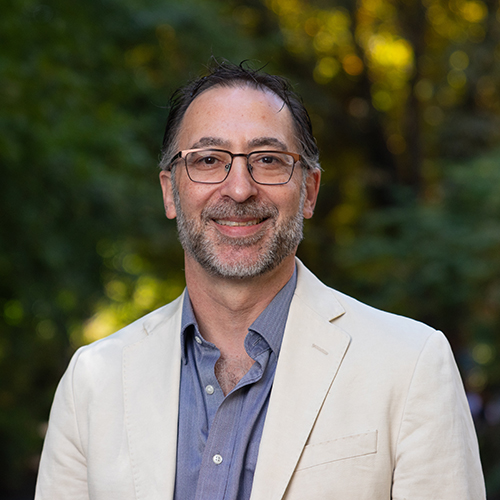As the AIDS epidemic ravages Africa, there are difficult decisions to be made: Where to site clinics. How much medication to purchase. How many orphanages to build for those left behind. To make such decisions, leaders depend on estimated projections for the spread of the disease. But developing accurate projections is a challenge where there is limited health data.
Several years ago, UNAIDS estimated the number of AIDS cases worldwide at 39 million. After their estimate was roundly criticized as being too high, they turned to Adrian Raftery for help.
Raftery, Blumstein-Jordan Professor of Statistics and Sociology, began working with UNAIDS in 2006 to develop more accurate AIDS projections worldwide. His professorship is named for former Sociology professor Phil Blumstein, who died of AIDS in 1991.

Raftery's main focus has been Africa, where HIV/AIDS can affect up to 40 percent of the population in some areas but where prevalence data remain extremely limited. He likens the scarcity of data to “estimating the number of cases of tuberculosis in the U.S. just using data from clinics in Lincoln, Nebraska and Columbia, South Carolina and just looking at pregnant women.”
What UNAIDS wanted was a projection model that would provide greater accuracy yet be simple enough for use by national planning officials in a wide variety of developing countries. Finding a single consistent method was a priority so that comparisons could be made between countries and within countries over periods of time.
The primary source of data? Not specialized HIV clinics. Not even general health clinics. Often the only available data was from antenatal clinics visited by pregnant women. The problem is that young women—a substantial fraction of all pregnant women— tend to have higher HIV prevalence than the general population, leading to inflated estimates. “The question,” says Raftery, “was how to use statistical methods to adjust for this bias.”
The traditional epidemiological model provides a single answer when making projections. “But we know that there are many possible trajectories an epidemic could follow,” says Raftery. Through a method known as Bayesian melding, Raftery combined that traditional model with a “hierarchical random effects model” that takes into account the variability of the data. His resulting projections lowered UNAIDS’s worldwide estimate from 39 million to 33 million.
To assess the accuracy of his method, Raftery input HIV data for individual countries from the mid-1990s and used Bayesian melding to predict future prevalence of AIDS. Comparing the predictions to what actually happened in those countries was encouraging. “We did surprisingly well given the method’s simplicity,” says Raftery, “which is pretty remarkable given the many things that aren’t taken into account—things we’d like to incorporate if data were available.”
UNAIDS is committed to implementing the new prediction method as quickly as possible. Raftery’s team, including Sam Clark, assistant professor of sociology, worked with the East-West Center in Honolulu to produce software that government officials from various African countries have already begun to use for their planning. “It’s been a very rapid transmission from academic research to actual use for policy and planning in ministries of affected countries,” says Raftery.
Not that there aren’t improvements to be made. Raftery is now working to improve computational efficiency. “The first method was very crude,” says Raftery. “We’re definitely improving on it. It’s still simplistic, but it’s the best that can be done for a lot of the countries. Of course this is not a static thing. Data get better as more clinics get involved. We’re continuing to work toward more sophisticated models.”
More Stories

The Public Impact of Private Cities
Geography major Edwin Bai has researched private cities, developed by individuals and corporations, that "take the libertarian idea of low government regulation to the maximum."

Demystifying Quantum
In a physics course for non-STEM majors, Professor Miguel Morales teaches quantum mechanics without the advanced mathematics most quantum courses require.

The Curious Journey of Chinese Characters
Several Asian countries adapted the Chinese writing system—the oldest writing system still in use—for their own languages. In a new book, Professor Zev Handel shares how that happened.